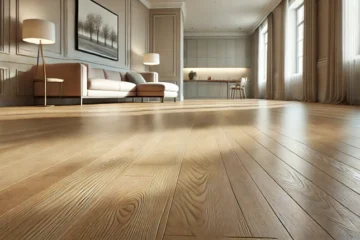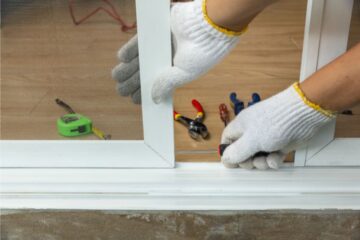Effective Methods to Remove Water-Based Paint from Carpeting

Spilling water-based paint on your carpet can feel like a disaster in the making. But before you panic, it’s important to know that with the right techniques, you can effectively remove water-based paint from your carpet without causing any lasting damage. Whether you’re dealing with a fresh spill or tackling a dried stain, understanding the most effective methods to remove water-based paint can save your carpet and your sanity. In this guide, we’ll walk you through step-by-step techniques to get your carpet looking like new again.
What Makes Water-Based Paint Removal Challenging?
Water-based paints, while easier to clean than their oil-based counterparts, can still pose a challenge when spilled on carpeting. These paints dry quickly, often seeping deep into carpet fibers. This fast drying time can make removing the paint particularly tricky, especially if the spill goes unnoticed for a while. The good news is that because water-based paints are water-soluble, they can be cleaned more easily than oil-based paints, as long as you act quickly and use the right methods.
Assessing the Situation: Fresh Spill vs. Dried Paint
The first step in removing water-based paint from your carpet is assessing the situation. Is the paint still wet, or has it dried? This will determine the approach you take.
How to Handle Fresh Water-Based Paint Spills
If you catch the spill while the paint is still wet, you’re in luck. Fresh paint is much easier to remove and doesn’t require as much elbow grease as dried paint. The key here is speed—acting quickly can prevent the paint from setting into the carpet fibers.
Dealing with Dried Water-Based Paint on Carpet
Dried paint is a different story. Once the paint has dried, it bonds with the carpet fibers, making it more challenging to remove. However, with the right techniques, even dried paint can be tackled effectively. The removal process may take a bit longer and require more effort, but it’s still possible to get your carpet back to its original condition.
Essential Tools and Materials for Paint Removal
Before diving into the paint removal process, gather all the necessary tools and materials. Having everything ready will make the process smoother and more efficient.
Must-Have Tools for the Job
- White cloths or paper towels
- Spray bottle filled with warm water
- Dull knife or paint scraper
- Soft-bristled brush
- Vacuum cleaner
- Bucket
Recommended Cleaning Solutions
- Mild dish soap
- Vinegar solution (one part vinegar to two parts water)
- Commercial carpet cleaner (specific for water-based paint)
- Rubbing alcohol
- Ammonia solution (one tablespoon of ammonia mixed with one cup of water)
Step-by-Step Guide to Removing Fresh Water-Based Paint
For fresh spills, time is of the essence. Follow these steps to effectively remove the paint:
1. Blot the Area
Immediately after the spill, use a white cloth or paper towel to blot the area. Avoid rubbing, as this can spread the paint and push it deeper into the carpet fibers. Continue blotting until no more paint transfers onto the cloth.
2. Apply Warm Water
Fill a spray bottle with warm water and lightly mist the stained area. The water will help dilute the paint, making it easier to blot out. Continue blotting with a clean cloth, switching to a fresh section of the cloth as it absorbs the paint.
3. Use a Mild Detergent Solution
If water alone doesn’t remove all the paint, mix a small amount of mild dish soap with warm water and apply it to the stain. Use a soft-bristled brush to gently work the solution into the carpet fibers. Blot the area again to lift out the paint and soap solution.
4. Rinse and Dry
After the paint is removed, rinse the area with clean water to remove any remaining soap residue. Blot the area dry with a clean towel. If necessary, use a fan or a hairdryer on a cool setting to speed up the drying process.
How to Remove Dried Water-Based Paint from Carpet
Removing dried paint requires a bit more effort, but with persistence, it can be done. Here’s how:
1. Scrape Off Excess Paint
Use a dull knife or paint scraper to gently scrape off as much dried paint as possible. Be careful not to damage the carpet fibers while doing this.
2. Apply a Cleaning Solution
Choose a cleaning solution suitable for water-based paint. Rubbing alcohol or a vinegar solution works well. Apply the solution to a small, inconspicuous area of the carpet first to test for colorfastness.
3. Work the Solution into the Stain
Use a soft-bristled brush to gently work the cleaning solution into the stain. This helps to break down the paint particles, making them easier to remove.
4. Blot the Area
After allowing the solution to sit for a few minutes, blot the area with a clean cloth. Repeat the process as necessary until the paint is removed.
5. Rinse and Dry
Rinse the area with clean water to remove any remaining cleaning solution. Blot dry and, if necessary, use a fan or hairdryer on a cool setting to help the carpet dry faster.
Common Mistakes to Avoid When Removing Paint from Carpet
| Mistake | Why It’s a Problem | Better Alternative |
|---|---|---|
| Rubbing the Stain Vigorously | This can push the paint deeper into the carpet fibers and cause spreading. | Blot gently with a clean cloth or paper towel to lift the paint without spreading it. |
| Using Bleach or Harsh Chemicals | These can discolor your carpet and weaken the fibers. | Stick to milder solutions like dish soap, vinegar, or rubbing alcohol. |
| Not Testing Cleaning Solutions First | Certain solutions can cause discoloration or damage to your carpet. | Always test in an inconspicuous area before applying to the stain. |
| Over-wetting the Carpet | Excess water can cause mold growth and damage the carpet backing. | Use small amounts of water and blot frequently to dry the area. |
When to Call in Professional Help
Sometimes, despite your best efforts, the paint stain may not come out completely. In such cases, it might be time to consider calling in professional carpet cleaners. They have specialized equipment and cleaning solutions that can tackle even the most stubborn stains without damaging your carpet.
Is It Worth the Cost?
Professional cleaning can be expensive, but if the paint stain is particularly large or deeply set, it could be worth the investment to restore your carpet to its original condition.
DIY vs. Professional Cleaning: Weighing the Pros and Cons
Before making a decision, weigh the cost of professional cleaning against the effort and time required for DIY removal. If the stain is small and manageable, you might save money by doing it yourself. However, for larger, more stubborn stains, professional cleaning might be the better option.
Helpful Hint:
If you’re dealing with an older carpet, consider patching the affected area if the stain is too stubborn. This can be a cost-effective alternative to replacing the entire carpet.
Preventing Future Paint Spills on Carpet
The best way to deal with paint stains is to prevent them from happening in the first place. Here are some tips to help you avoid future spills:
Use Drop Cloths or Plastic Sheeting
Before starting any painting project, cover your carpet with drop cloths or plastic sheeting. This simple step can save you a lot of hassle later on.
Be Mindful of Paint Containers
Keep paint containers securely closed when not in use and place them on a stable surface to avoid accidental spills.
Have Cleaning Supplies Ready
Keep cleaning supplies on hand while painting so that you can quickly address any spills that occur. Acting fast is key to preventing the paint from setting into the carpet fibers.
Pros and Cons of DIY vs. Professional Carpet Cleaning
Pros
- Cost-effective, especially for small stains.
- Immediate action can prevent the paint from setting.
- Convenient if you have the right tools and cleaning solutions.
Cons
- Can be time-consuming, particularly for larger stains.
- Risk of damaging carpet fibers if not done correctly.
- May require multiple attempts to fully remove the stain.
FAQs
Wrapping Up
Removing water-based paint from carpeting might seem daunting, but with the right approach and tools, it’s a challenge that can be effectively managed. Whether you tackle the stain yourself or call in professional help, the key is to act quickly and use the appropriate techniques for either fresh or dried paint. By following the steps outlined in this guide, you can keep your carpets looking fresh and clean, no matter what spills occur. Remember, prevention is always better than cure, so take the necessary precautions before your next painting project. With a little care and attention, you can enjoy a beautiful, stain-free carpet for years to come.


